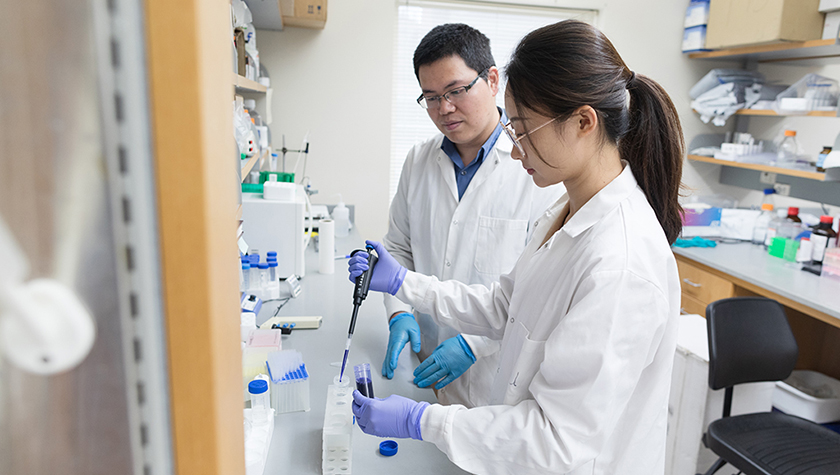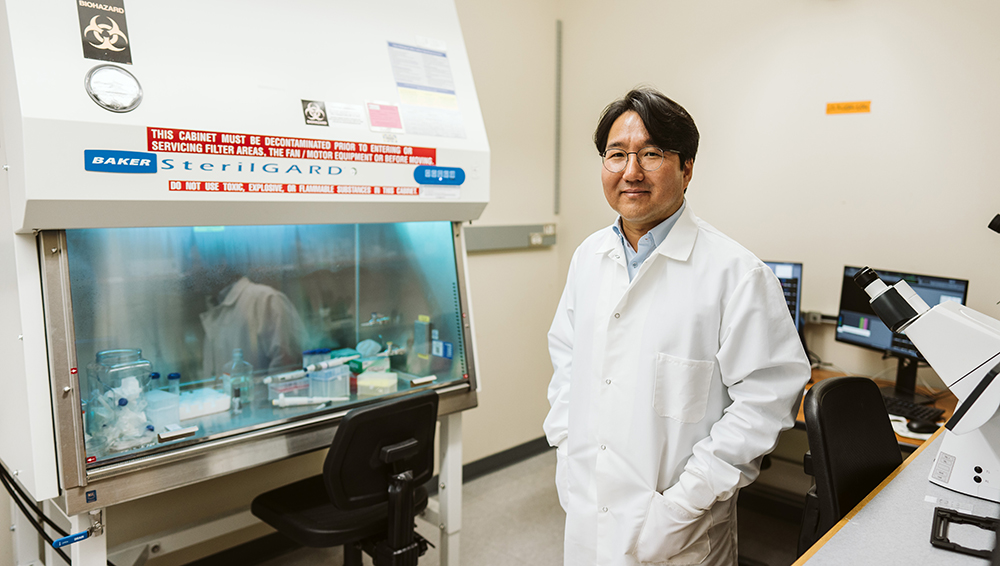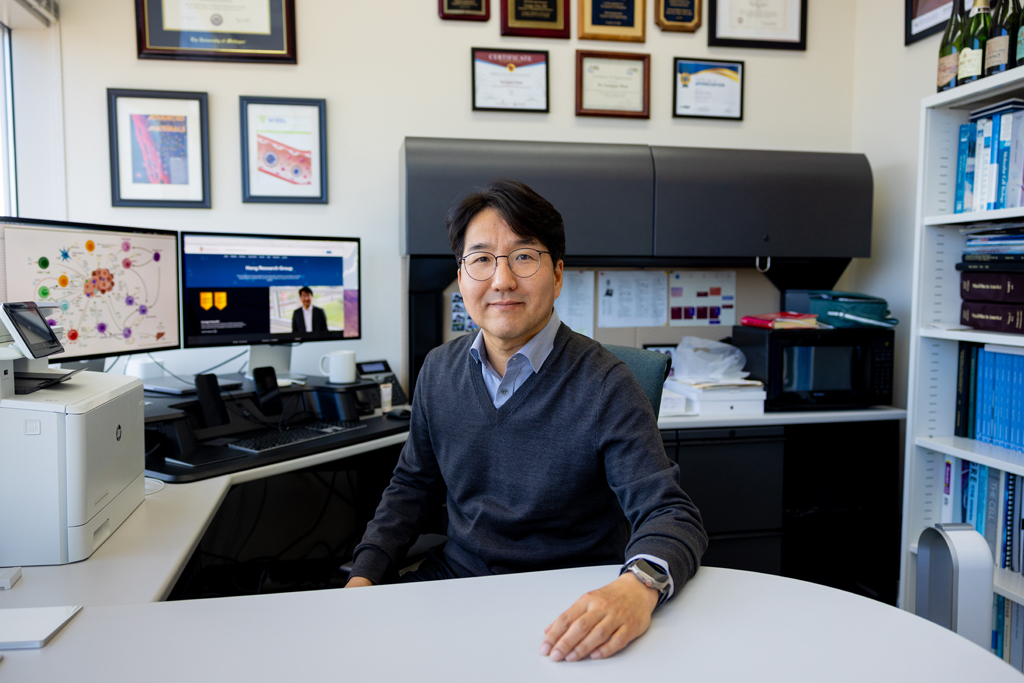
School of Pharmacy Professor Seungpyo Hong and his team are working to improve drug delivery and cancer monitoring
By Nicole Etter
From an inhalable treatment for idiopathic pulmonary fibrosis to a better way to more accurately monitor cancer progression using a simple blood draw, the Hong Research Group continues to propel exciting innovations in medicine.
The lab is led by University of Wisconsin–Madison School of Pharmacy Professor Seungpyo Hong, the Milton J. Henrichs Chair in Pharmaceutical Sciences and director of the Wisconsin Center for NanoBioSystems (WisCNano), which leads the university’s interdisciplinary efforts to advance nanomedicine approaches.
“My research has always focused on how to improve patients’ lives and how to improve the current techniques that treat and detect cancer and other debilitating diseases,” says Hong.
Through his work with WisCNano, Hong helps to shape nanomedicine research across the campus, but his influence is felt throughout the field. Hong is an associate editor for Nanomedicine: Nanotechnology, Biology and Medicine, and he’s been inducted as a fellow of the American Institute for Medical and Biological Engineering (AIMBE), which represents the top 2% of medical and biological engineers.
“I feel blessed because I’m doing what I want to do, which is research, and at the same time — if I get lucky enough — I can have good potential to directly help people,” he says.
Drawing on expertise in materials science, biology, and nanotechnology, the Hong Research Group works on a variety of projects centered on two main themes: developing nanoparticles for more effective drug delivery, and developing novel technologies for liquid biopsy.
Here’s a glimpse at the renowned lab’s daily activities.
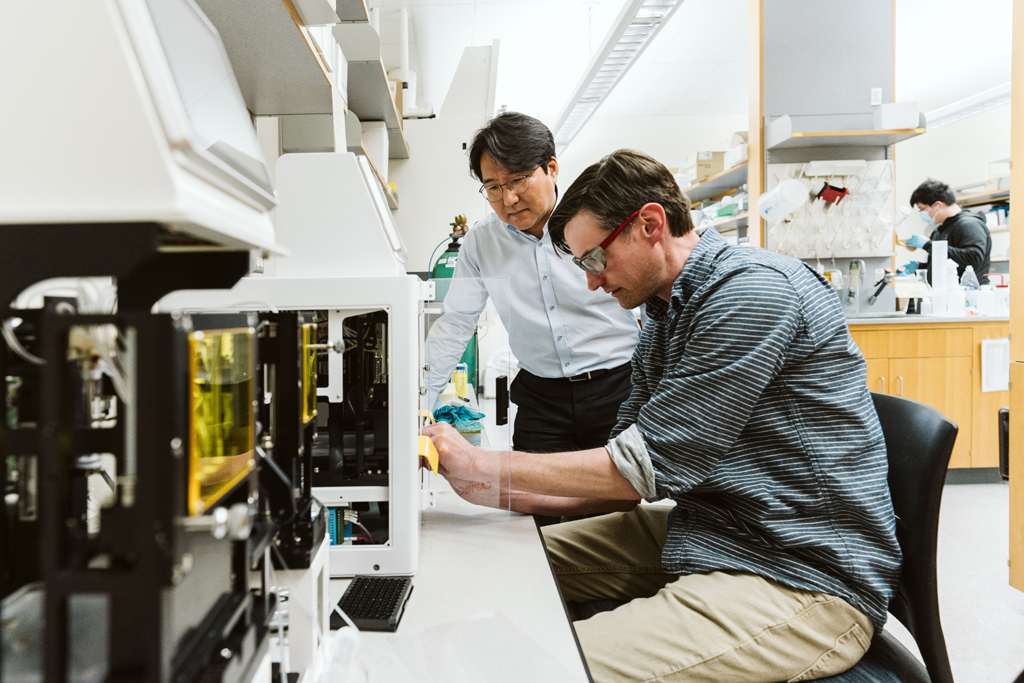
Hong, left, consults with former lab scientist Michael Poellmann as he works to optimize liquid biopsy technology using a device called CapioCyte.
The goal of the liquid biopsy work is develop a better way to monitor cancer progression instead of conventional biopsies or imaging scans. Hong’s lab is working on methods to capture and analyze circulating tumor cells (CTC) from patient blood samples, with promising results so far. Hong co-founded a startup, Capio Biosciences, to help commercialize his lab’s research on CTC capture technology.
“The box is a prototype device actually manufactured by my company to translate what we have developed in the lab,” Hong explains. “In this picture, Mike is trying to install the capture surface that we make in the lab into the machine, and then he’s going to inject the blood samples from the cancer patients and then try to capture and analyze circulating tumor cells.”
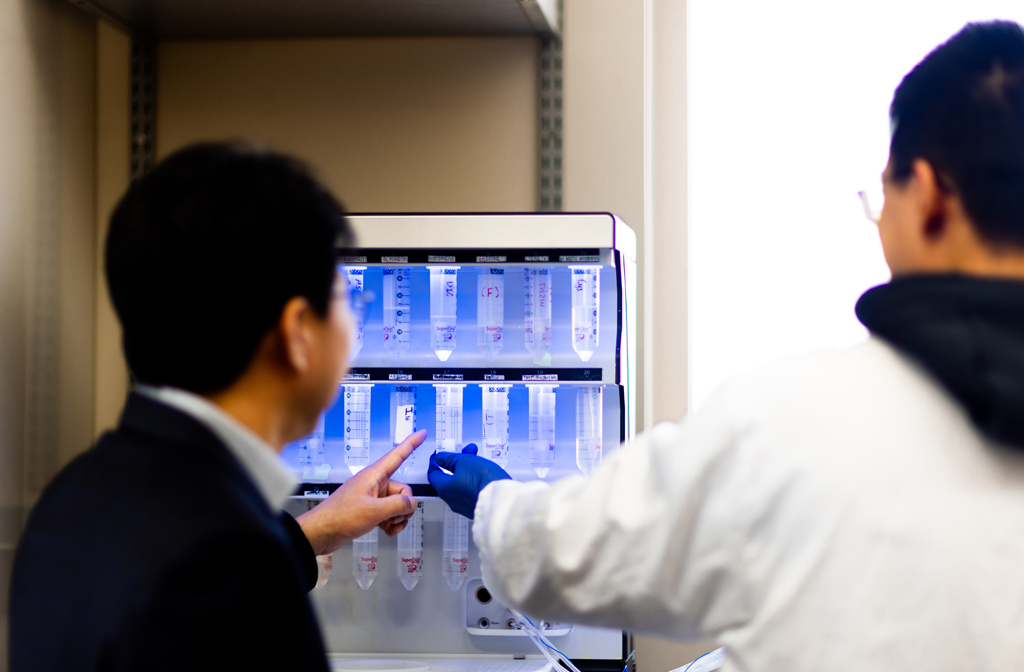
Hong and Pharmaceutical Sciences graduate student Tyler Tang prepare this machine, an ultra-efficient microwave peptide synthesizer, to turn amino acids into peptides.
“That really speeds up the synthetic procedure,” Hong says. “You can basically make a peptide in a reasonable length in a matter of minutes.”
Hong’s lab is trying to develop peptides as building blocks of nanocarriers for treatment of cancer. Researchers hope to use the nanocarriers to deliver immune checkpoint inhibitors, which prevent cancer cells from turning off immune system cells that would otherwise prevent a tumor from growing.
“We are particularly interested in using peptides for immunotherapy,” Hong says. “We have been working on various peptides as immune checkpoint inhibitors combined with our nanoparticles, and then we figured out that we can substantially increase the binding kinetics of those immune checkpoint inhibitors based on peptides so that we can maximize the therapeutic efficacy of those agents.”
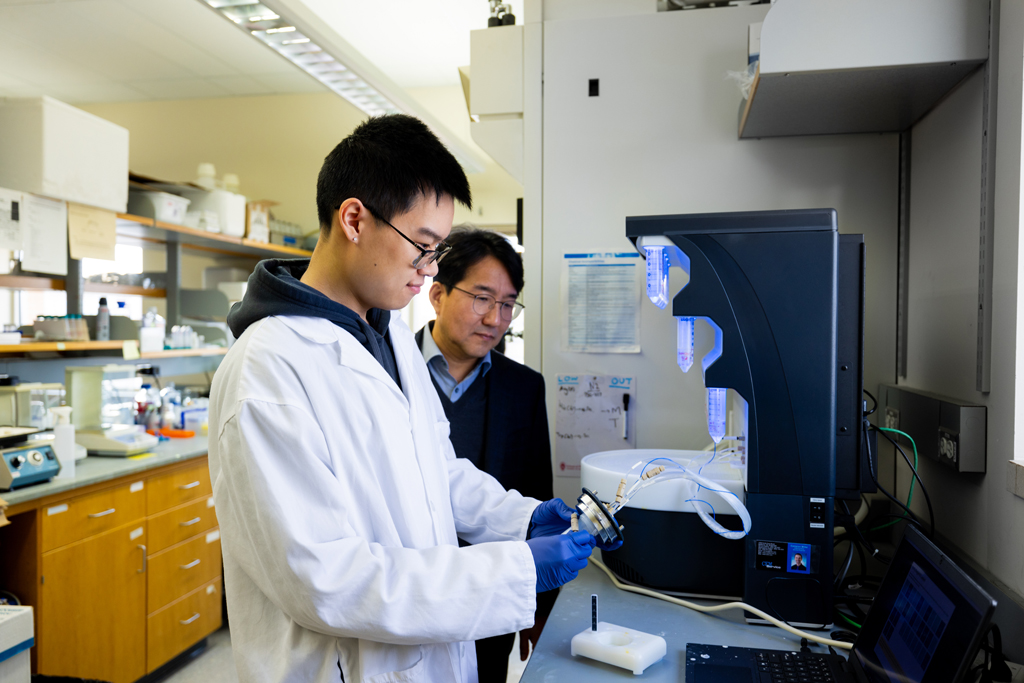
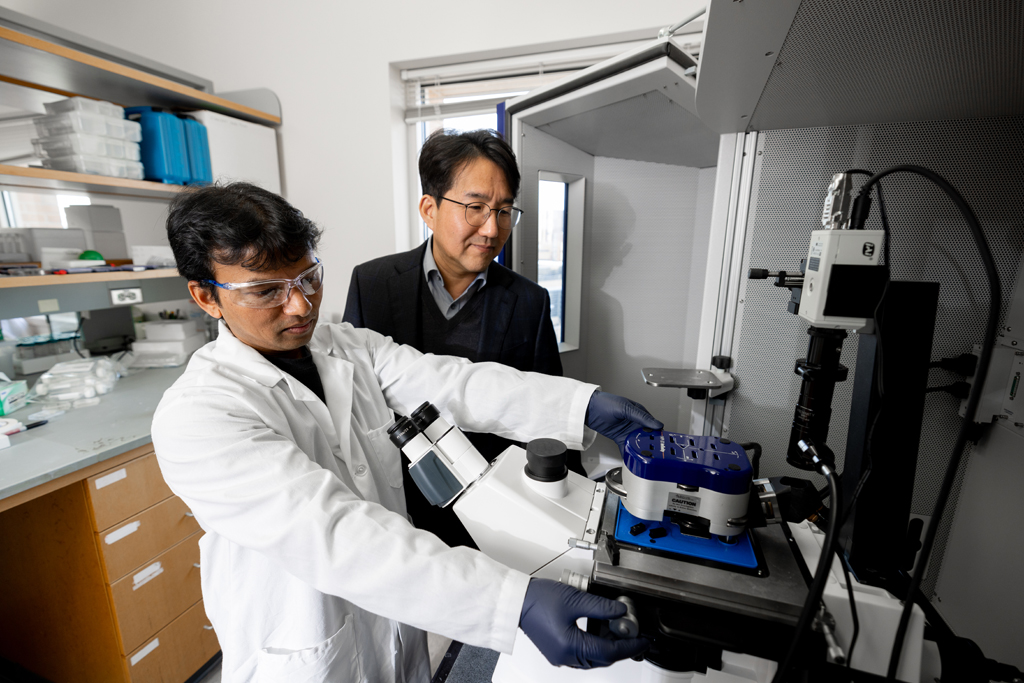
Hong looks on as Narsimha Mamidi, staff scientist at WisCNano, uses atomic force microscopy (AFM) to measure binding kinetics between the protein on the surface (simulating cancer cell surface) and nanoparticles on the AFM tip.
“The beauty of this machine is that it can not only image the surface at a really, really high resolution, but also it can feel the surface, meaning that we can record all the forces generated between this AFM tip and the surface of interest,” Hong says. “This measurement will elucidate how strongly the engineered nanoparticles would bind to the cancer cell surface, which in turn would maximize the efficacy of immune checkpoint inhibition for effective cancer immunotherapy.”
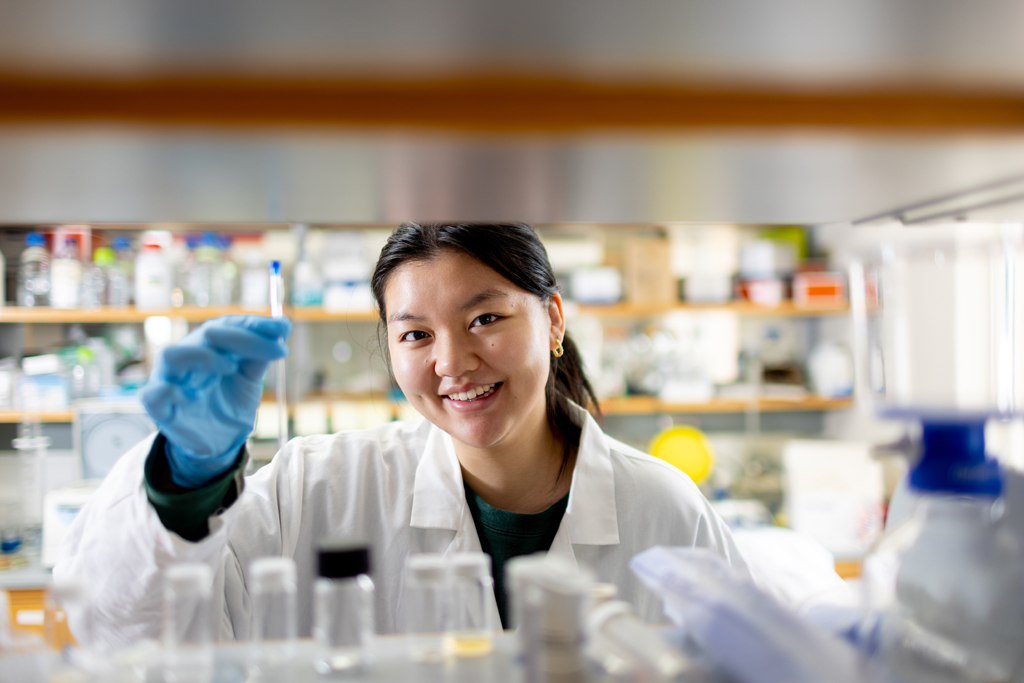
Ashley Liu, an undergraduate chemistry student (pictured above), works with Pharmaceutical Sciences doctoral student DaWon Kim (pictured below) on studies using the lab’s newly developed nanoparticles.
“They have been testing our nanoparticles on the cellular and animal level, measuring efficacy, biodistribution, and toxicity,” Hong says.
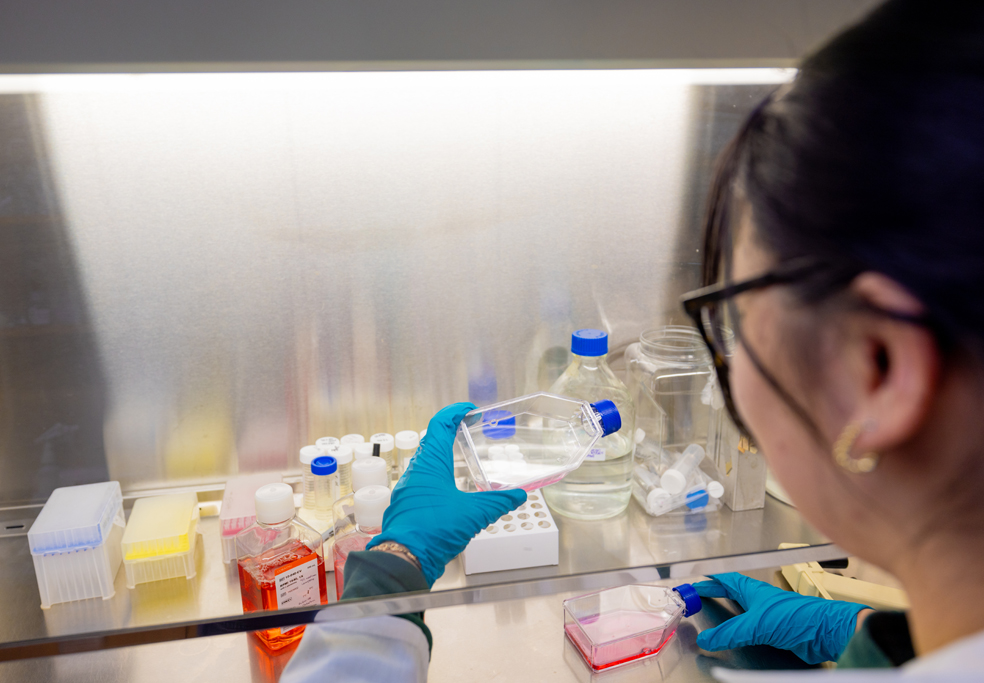
Liu cultures tumor cells to test novel nanoparticles that target oncogenic pathways, which play a role in the development and progression of cancer.
“The cultured cells can be also used for our liquid biopsy project that develops blood-circulating biomarkers,” Hong says.
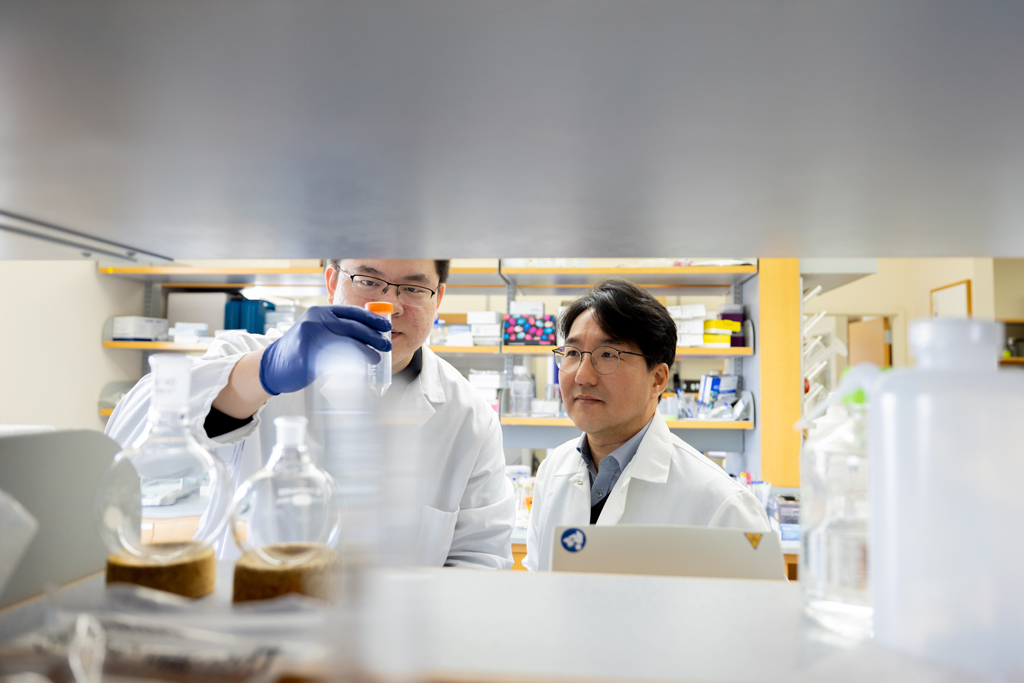
Pharmaceutical Sciences doctoral student Zixian Zhu (left) prepares a new type of nanoparticle that combines dendritic polymers and lipids.
“They’re capable of delivering multiple drugs at the same time. So we can not only deliver conventional chemo drugs, but also deliver some genetic cargo so that you can apply some gene therapy, essentially,” Hong explains. “We can deliver mRNA, for example, for vaccination, and then also carry the peptides that can serve as an immune checkpoint inhibitor.”
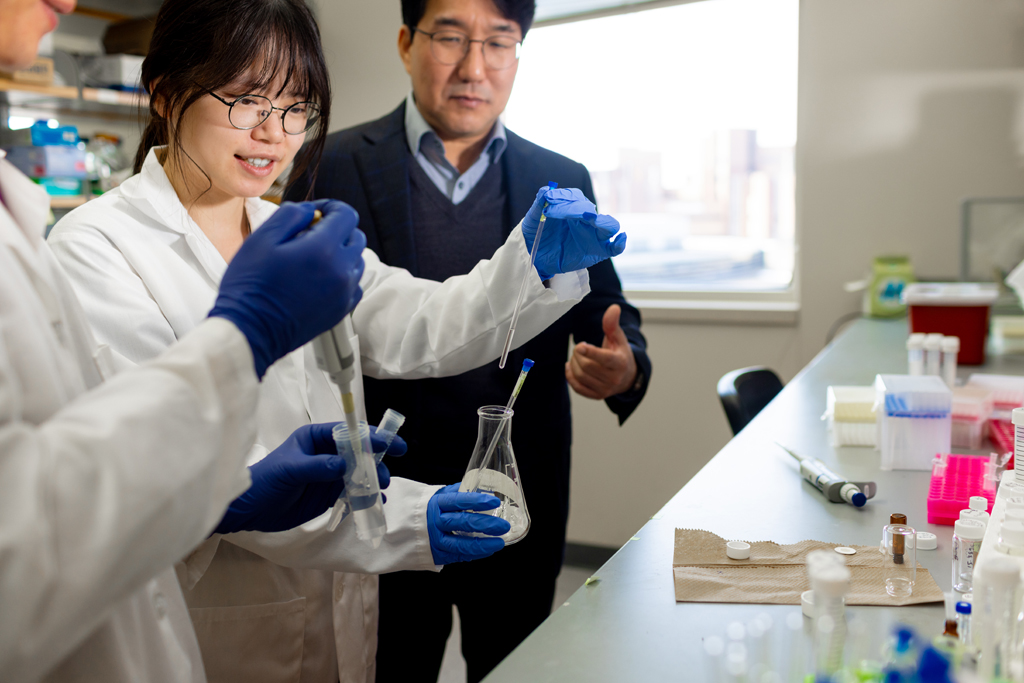
Postdoctoral fellow Jin Woong Lee (left) and Pharmaceutical Sciences doctoral student Ying Xu (middle) prepare samples for nuclear magnetic resonance (NMR) to confirm the reactions of dendritic nanoparticles for combination drug delivery.
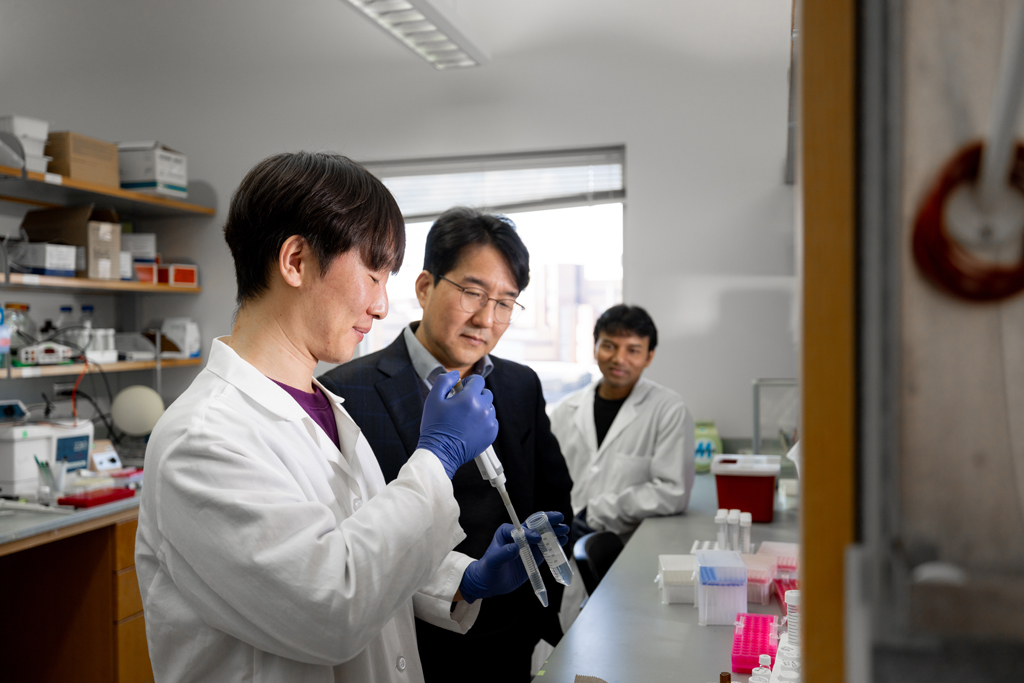
Lee combines peptides with nanoscale tree-like polymers called dendrimers to create peptide-dendrimer conjugates (PDCs).
“This can really boost up the therapeutic efficacy of peptides,” Hong says. “Usually the peptides are not good enough compared to antibodies as a pharmaceutical agent because of their inferior binding kinetics and really short plasma circulation time. This way we can maximize the binding kinetics and prolong the circulation time in the bloodstream.”
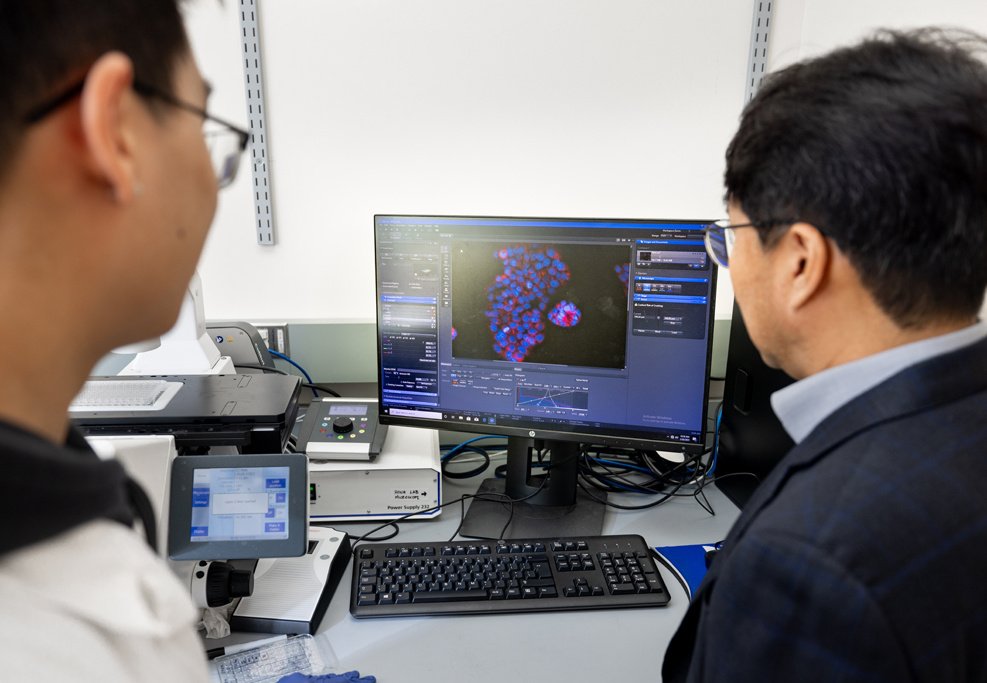
Hong and Tang (left) examine how the lab’s nanoparticles interact with breast cancer cells.
“The biggest problem in cancer therapy is that all the drugs are really toxic and kill everything,” Hong says. “So we are confirming the specificity of our nanoparticles, trying to see if our engineered nanoparticles are specific to tumor cells only. Because we see that red signal from the cells, that means that the nanoparticles interacted with the tumor cells.”
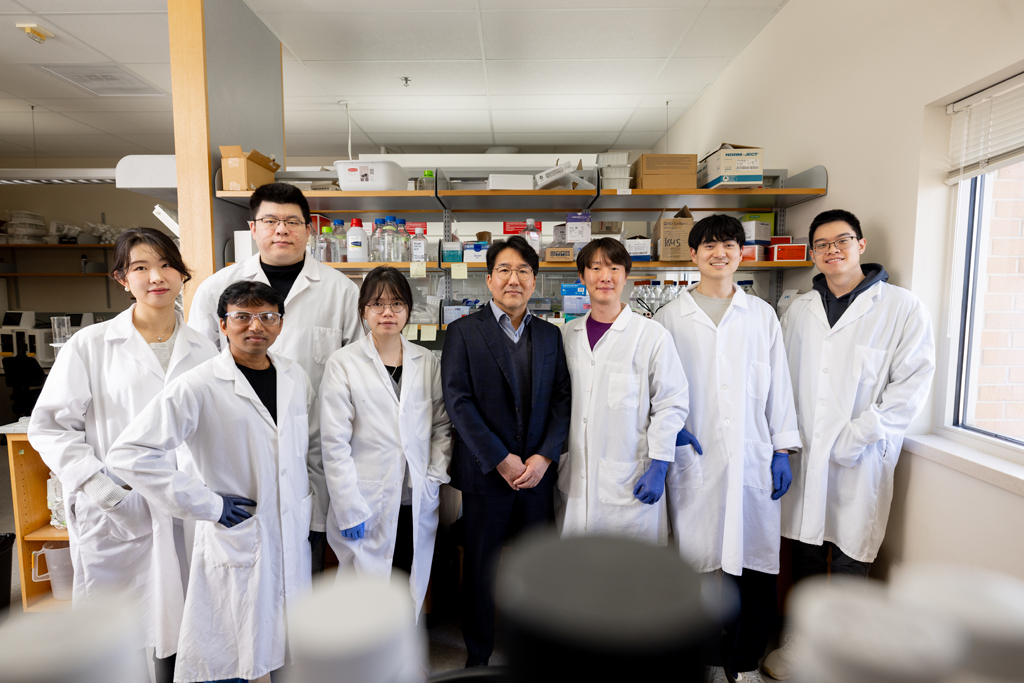
The Hong Research Group, from left to right:
DaWon Kim, Pharmaceutical Sciences doctoral student; Narsimha Mamidi, staff scientist at WisCNano (front row); Zixian Zhu, Pharmaceutical Sciences doctoral student (back row); Ying Xu, Pharmaceutical Sciences graduate student; Hong; JinWoong Lee, postdoctoral fellow; Carter Kim, Pharmaceutical Sciences doctoral student; and Tyler Tang, Pharmaceutical Sciences doctoral student.

